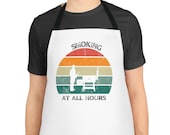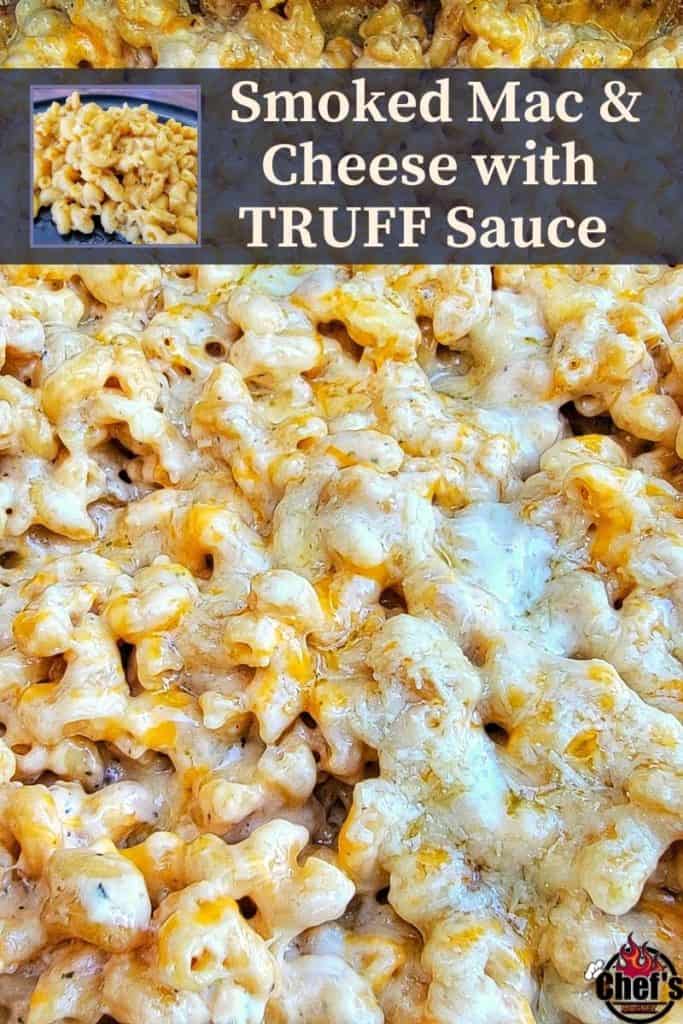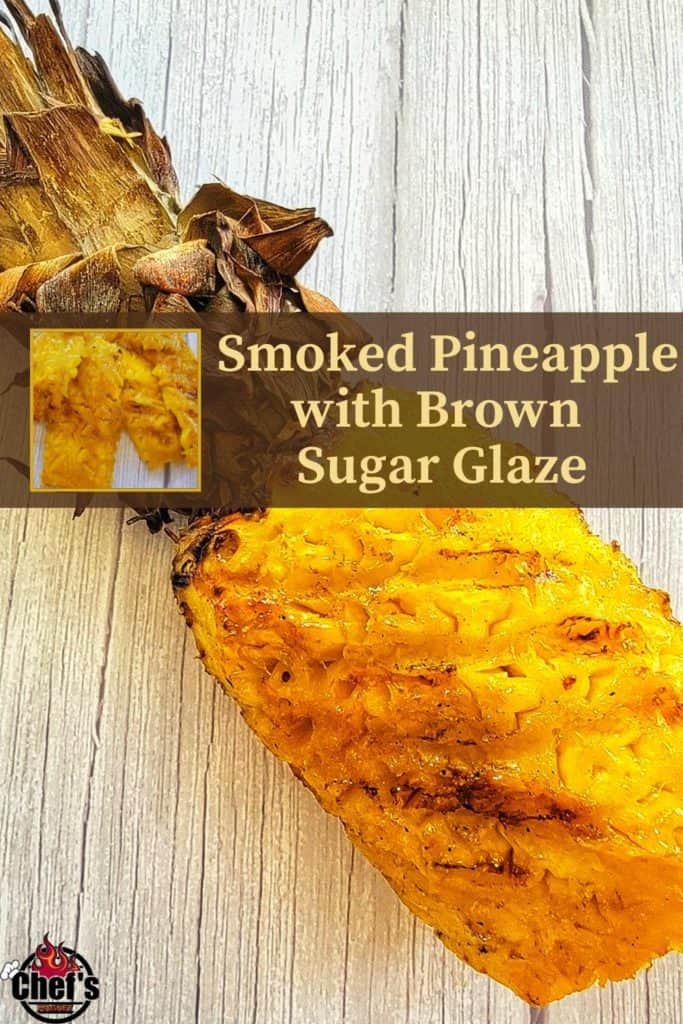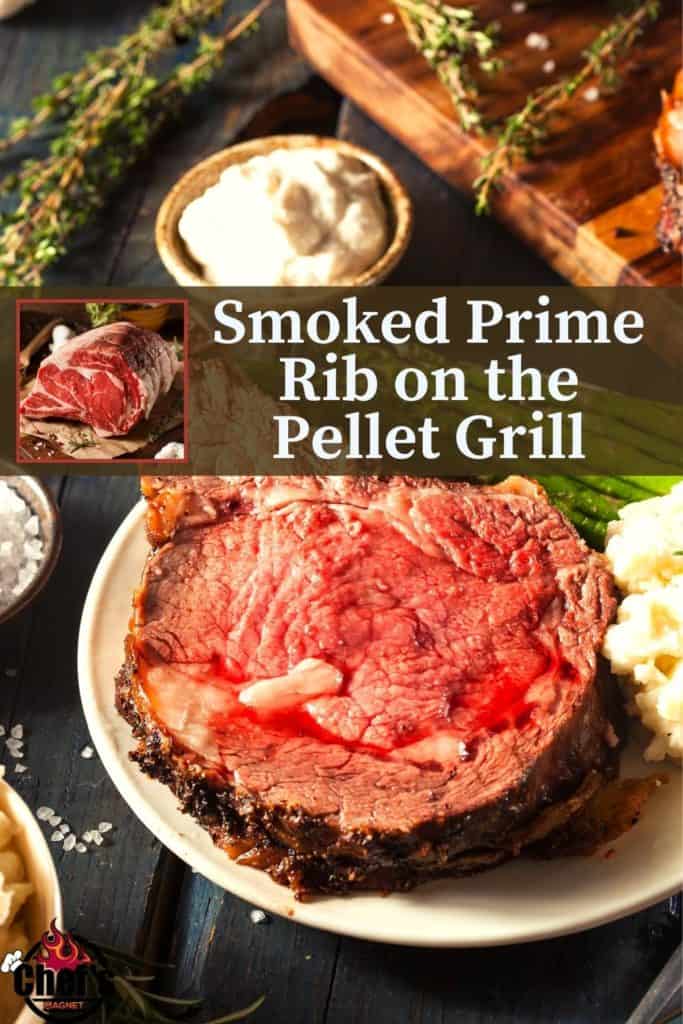Pellet grills have revolutionized the way we approach outdoor cooking. Combining convenience, versatility, and exceptional flavor, these innovative grills have gained immense popularity among cooking buffs and professionals alike. Whether a novice or a seasoned griller, this beginner’s guide to pellet grills will equip you with the knowledge and confidence to create mouthwatering smoked dishes using a pellet grill.
Why choose a pellet grill? Unlike traditional charcoal and gas grills, pellet grills rely on wood pellets as the primary fuel source, offering a unique smoky flavor profile. You can experiment with various flavors, such as rich hickory with a pellet grill.
Throughout this guide, we’ll delve into the ins and outs of pellet grill cooking. From understanding the basics of pellet grills to selecting the right equipment and mastering essential smoking techniques, we’ll cover everything you need to embark on your journey toward becoming a smoking maestro.
So, fire up your passion for cooking, explore the world of pellet grills, and prepare yourself for a delectable flavor and aroma adventure. Let’s dive into the captivating art of smoking food using pellet grills and unlock a whole new realm of culinary possibilities!
Understanding Pellet Grills
Before you embark on your smoking journey, it’s crucial to understand the inner workings of pellet grills and the unique advantages they offer. Let’s dive into the fascinating world of pellet grill technology and discover why they have become a favorite among cooking enthusiasts.
What are Pellet Grills, and How Do They Work?
Pellet grills, also known as pellet smokers, are outdoor cooking devices that use wood pellets as their fuel source. These pellets are composed of compressed sawdust and come in a variety of flavors, such as oak, mesquite, apple, and more. Pellet grills operate through an automated system that combines a digital control panel, a temperature probe, and an electric auger to move the pellets.
Digital Control Panel
The digital control panel is the heart of a pellet grill. It allows you to set and monitor the cooking temperature with precision. Simply select your desired temperature, and the pellet grill will automatically adjust the pellet feed and airflow to maintain a consistent cooking environment.
Temperature Probe
Pellet grills are equipped with a temperature probe that constantly monitors the internal temperature of the cooking chamber. This ensures accurate temperature control, allowing you to achieve the desired doneness and flavor in your smoked dishes.
Electric Auger
The electric auger is responsible for feeding the wood pellets from the hopper into the fire pot. It precisely controls the amount of pellets delivered to maintain the desired temperature. As the pellets enter the fire pot, they ignite, creating a clean-burning fire that produces smoke that imparts flavor to the food.
Advantages of Pellet Grills for Smoking Food
Flavor Infusion
One of the most significant advantages of pellet grills is their ability to infuse food with rich, smoky flavors. The variety of wood pellet flavors available allows you to experiment and customize the taste of your dishes, from subtle and fruity to bold and robust.
Temperature Control
Pellet grills excel in maintaining consistent temperatures throughout the cooking process. The automated system adjusts the pellet feed and airflow, eliminating the need for constant monitoring and manual adjustments. This ensures that your food cooks evenly and achieves the desired level of tenderness.
Versatility
Pellet grills are incredibly versatile, allowing you to smoke, grill, bake, roast, and even barbecue. With precise temperature control, you can explore a wide range of cooking techniques and prepare an array of dishes, from succulent ribs to tender briskets and everything in between.
Convenience
Pellet grills simplify the smoking process, making it accessible to beginners and seasoned grillers alike. The automated system takes care of temperature regulation, leaving you with more time to focus on other aspects of cooking, such as preparing marinades or spending time with your guests.
Now that you have a solid understanding of pellet grills and their advantages, it’s time to explore how to choose the right pellet grill that suits your needs and preferences. In the next section, we’ll delve into the factors you should consider when selecting the perfect pellet grill to embark on your smoking adventures.
Choosing the Right Pellet Grill
When it comes to selecting a pellet grill, several factors should be taken into consideration to ensure you find the perfect fit for your smoking needs. From size and temperature control to brand reputation and budget, let’s explore the essential elements to consider when choosing a pellet grill.
Size and Cooking Area
The size of the pellet grill plays a vital role in determining its capacity and suitability for your cooking needs. Consider the amount of food you typically smoke or grill and the number of people you’ll be serving. If you frequently entertain large gatherings, opt for a larger cooking area to accommodate more food at once. On the other hand, if you have limited space or smoke for a smaller group, a compact pellet grill may be more suitable.
Temperature Control and Accuracy
Temperature control is a critical aspect of smoking food, and a reliable pellet grill should offer precise temperature adjustments. Look for models that provide a wide temperature range, allowing you to experiment with different smoking techniques and cook a variety of dishes. Additionally, check if the grill has advanced temperature control features like programmable timers, dual temperature probes, or Wi-Fi connectivity for remote monitoring and control.
Build Quality and Durability
Investing in a well-built pellet grill ensures its longevity and performance over time. Look for grills made from sturdy materials like stainless steel or heavy-duty steel that can withstand the rigors of outdoor cooking. Pay attention to the quality of craftsmanship, including the welds, hinges, and overall construction. Reading customer reviews and checking the reputation of the brand can give you insights into the grill’s durability and reliability.
Brand Reputation and Customer Support
Choosing a reputable brand is important when purchasing a pellet grill. Established brands often have a track record of delivering quality products and reliable customer support. Research customer reviews, ratings, and testimonials to gauge the experiences of other users with a particular brand or model. Additionally, consider the availability of spare parts and the accessibility of customer support should you require assistance or warranty coverage.
Budget Considerations
Determining your budget beforehand can help narrow down your options and guide your decision-making process. Pellet grills come in a wide price range, from budget-friendly options to high-end models with advanced features. Assess your needs, preferences, and the level of investment you’re comfortable with, and strike a balance between affordability and desired features.
Additional Features and Accessories
Consider the additional features and accessories offered by the pellet grill. Some grills come with built-in meat probes, side shelves, storage cabinets, or grease management systems for added convenience. Assess which features are important to you and align with your cooking style and preferences.
By carefully evaluating these factors, you can choose a pellet grill that aligns with your needs, budget, and cooking aspirations. In the next section, we’ll dive into the essential tools and accessories that will enhance your smoking experience with a pellet grill.
Essential Tools and Accessories
To embark on your smoking journey with a pellet grill, it’s essential to have the right tools and accessories at your disposal. These tools not only enhance your cooking experience but also ensure the best possible results. Let’s explore the must-have tools and recommended accessories for your pellet grill adventures.
Must-Have Tools
Meat Thermometer: A reliable meat thermometer is crucial for monitoring the internal temperature of your food accurately. Look for a digital thermometer with a probe that can withstand high temperatures and provide quick and accurate readings.
Grill Brushes: To keep your pellet grill in top condition, invest in a good-quality grill brush. This will help you remove any residue or buildup from the grates and ensure optimal heat distribution during the smoking process.
Long-Handled Tongs: Long-handled tongs are invaluable for maneuvering and flipping food on the grill. Opt for tongs with a sturdy grip and a length that keeps your hands safely away from the heat.
Heat-Resistant Gloves: Protect your hands from heat and potential burns with a pair of heat-resistant gloves. These gloves provide dexterity and allow you to handle hot grill grates or adjust temperature settings without risking injury.
Grill Spatula: A grill spatula is a versatile tool for flipping burgers, steaks, or delicate items like fish fillets. Look for a spatula with a sturdy, wide blade and a comfortable handle for better control.
Recommended Accessories
Grill Mats: Grill mats are non-stick surfaces that can be placed directly on the grates. They prevent food from sticking and falling through the cracks, making cleanup easier and enhancing the versatility of your pellet grill.
Smoke Boxes: Smoke boxes are great accessories for adding extra smoky flavor to your dishes. They are filled with wood chips or pellets and placed directly on the grill grates, producing additional smoke during the cooking process.
Drip Pans: Drip pans are used to catch drippings and prevent flare-ups. They also help in maintaining a cleaner cooking environment by reducing grease buildup in the grill. Choose disposable aluminum drip pans for convenience.
Grill Cover: Protect your pellet grill from the elements with a durable grill cover. This accessory helps shield your grill from rain, UV rays, and dust, extending its lifespan and keeping it in optimal condition.
Grill Rack Extenders: Grill rack extenders increase the cooking surface area of your pellet grill, allowing you to smoke or grill more food at once. They are particularly useful when cooking for larger groups or preparing multiple dishes simultaneously.
Investing in these essential tools and recommended accessories will not only enhance your cooking experience but also make your pellet grill adventures more enjoyable and convenient. In the next section, we’ll guide you through the process of preparing your pellet grill for smoking and share essential tips for optimal performance.
Preparing Your Pellet Grill for Smoking
Before you dive into the flavorsome world of smoking food with your pellet grill, it’s crucial to properly prepare the grill to ensure optimal performance and delectable results. In this section, we’ll walk you through the step-by-step process of setting up and seasoning your pellet grill for a successful smoking experience.
Setting Up Your Pellet Grill
Choose the Right Location: Select a well-ventilated outdoor area for your pellet grill. Ensure there is enough clearance around the grill to prevent any safety hazards. Avoid placing it near flammable materials or structures.
Assemble the Grill: Follow the manufacturer’s instructions to assemble your pellet grill. Pay attention to details such as attaching the legs, attaching the hopper, and securing all components properly.
Position the Grill: Place the pellet grill on a level surface, ensuring stability during cooking. Use a leveling tool if necessary to make sure the grill is balanced.
Connect to Power: Plug your pellet grill into a grounded electrical outlet. Ensure that the cord is safely positioned away from any hot surfaces or potential tripping hazards.
Seasoning Your Pellet Grill
Seasoning, also known as “curing” or “burning in,” is an essential step to remove any manufacturing residues and to create a non-stick cooking surface on your grill grates. Follow these steps to season your pellet grill:
Clean the Grates: Remove any packaging materials and clean the grates thoroughly using a grill brush to remove any debris or contaminants.
Fill the Hopper: Fill the hopper with your preferred wood pellets. Choose pellets that complement the flavors you want to impart to your dishes.
Preheat the Grill: Turn on your pellet grill and set the temperature to 350°F (175°C). Allow the grill to preheat for approximately 15 to 20 minutes.
Seasoning Process: Once the grill reaches the desired temperature, close the lid and let it run for about 30 to 45 minutes. This process helps burn off any residual substances and creates a protective layer on the grates. Different pellet grill brands outline different steps so follow the instructions that come with your grill.
Monitor the Smoke: During the seasoning process, you may notice light smoke coming from the grill. This is normal and indicates that the seasoning is taking place.
Cool Down and Clean: After the seasoning process is complete, turn off the pellet grill and allow it to cool down. Once cooled, use a grill brush to clean the grates, removing any ash or residue.
Maintenance and Safety Tips
Regular Cleaning: Keep your pellet grill in optimal condition by regularly cleaning the grates, grease management system, and interior. Follow the manufacturer’s instructions for proper cleaning and maintenance.
Grease Management: Empty and clean the grease management system after each use to prevent grease buildup and potential flare-ups. This helps maintain a safe cooking environment.
Safety Precautions: Always follow the safety guidelines provided by the manufacturer. Use heat-resistant gloves when handling hot components, keep children and pets away from the grill, and never leave the grill unattended during operation.
Choosing the Right Wood Pellets
The choice of wood pellets plays a significant role in the flavor profile of your smoked dishes. Each type of wood imparts its unique aroma and taste, elevating your culinary creations to new heights. In this section, we’ll take a closer look at popular wood pellet flavors and guide you in selecting the right ones to enhance your smoked delights.
Popular Wood Pellet Flavors
Mesquite: Mesquite wood pellets offer a robust and distinct flavor profile. They are perfect for bold and savory dishes like beef, pork, and game meats. The strong, smoky flavor of mesquite adds depth and richness to your smoked creations.
Hickory: Hickory is a classic wood pellet flavor known for its strong and slightly sweet taste. It pairs exceptionally well with pork, chicken, and ribs, providing a traditional smoky flavor that is popular in American barbecue.
Apple: Apple wood pellets provide a mild and slightly sweet flavor with a hint of fruitiness. They are versatile and complement a wide range of meats, including poultry, pork, and seafood. Apple wood adds a delicate touch of sweetness to your smoked dishes.
Cherry: Cherry wood pellets offer a subtly sweet and fruity flavor profile. They work wonderfully with poultry, pork, and lamb, infusing a delightful hint of sweetness into the meat. Cherry wood also creates a beautiful reddish hue on the exterior of your smoked creations.
Oak: Oak wood pellets provide a reliable and well-balanced flavor that works well with various meats, including beef, poultry, and game. Oak imparts a medium smoky taste, allowing the natural flavors of the meat to shine while adding a pleasant smokiness.
Choosing the Right Wood Pellet Flavor
When selecting wood pellets for smoking, consider the following factors:
Intensity of Flavor: Determine whether you prefer a bold and robust flavor or a more subtle and delicate taste. Mesquite and hickory offer strong profiles, while apple and cherry provide milder options.
Meat Pairing: Consider the type of meat you’ll be smoking and choose a wood pellet flavor that complements its natural flavors. For example, fruity woods like apple and cherry work well with poultry and pork, while stronger woods like mesquite and hickory are ideal for beef and game meats.
Experimentation: Don’t be afraid to experiment and mix different wood pellet flavors to create your unique blend. Mixing flavors can add complexity and depth to your smoked dishes, allowing you to tailor the taste to your preference.
Personal Preference: Ultimately, the choice of wood pellet flavor depends on your personal preference and the flavors you enjoy most. Consider the flavor profiles that resonate with your taste buds and align with the dishes you love to cook.
Remember to use high-quality wood pellets from reputable brands to ensure the best flavor and performance. Store your wood pellets in a dry and airtight container to maintain their freshness.
By exploring different wood pellet flavors and experimenting with combinations, you’ll have the opportunity to create tantalizing and customized smoked delights that will impress your family and friends.
Smoking Techniques and Tips
To achieve mouthwatering results with your pellet grill, mastering smoking techniques is essential. From temperature control to smoke infusion, understanding the art of smoking will elevate your culinary creations to new heights. In this section, we’ll delve into key smoking techniques and provide you with valuable tips for achieving exceptional flavor and tenderness in your smoked dishes.
Temperature Control
Preheating: Before placing your food on the grill, preheat it to the desired temperature. This ensures a stable cooking environment and allows the smoke to penetrate the meat effectively.
Low and Slow: Smoking is a slow cooking method. Maintain a low and consistent temperature range, typically between 225°F (107°C) and 275°F (135°C), to ensure even cooking and tender results. Avoid sudden temperature fluctuations to prevent overcooking or drying out the meat.
Use a Meat Probe: Invest in a quality meat probe to monitor the internal temperature of the food accurately. Different meats have specific target temperatures for doneness, and using a meat probe eliminates the guesswork.
Smoke Infusion
Choose the Right Wood Pellets: As discussed in the previous section, select wood pellets that complement the flavors of your meat. The type of wood determines the intensity and character of the smoke flavor.
Smoke Generation: To achieve optimal smoke infusion, follow these tips:
Add wood pellets to the hopper or smoke box according to the manufacturer’s instructions.
Avoid over-smoking, as it can result in bitter flavors. Find the right balance to enhance the taste without overpowering the dish. Consider using smoking techniques like “thin blue smoke,” which indicates the perfect level of smoke for flavor infusion.
Adding Smoke at the Beginning: For more intense smoke flavor, add wood pellets to the grill at the beginning of the cooking process. This allows the meat to absorb the smoke flavors throughout the entire cooking time.
Moisture and Tenderness
Water Pan: Placing a water pan in the grill helps maintain moisture levels and promotes tender results. The water pan also helps regulate temperature and prevents the meat from drying out. This isn’t needed in most cooks but occasionally can be helpful.
Wrapping: Consider wrapping the meat in foil or butcher paper during the cooking process. This technique, known as the “Texas crutch,” helps retain moisture and enhances tenderness. It is particularly beneficial for larger cuts of meat like brisket or pork shoulder.
Patience and Monitoring
Avoid Frequent Lid Opening: Opening the lid frequently can cause temperature fluctuations and disrupt the smoking process. Try to resist the temptation to peek too often and maintain a consistent cooking environment.
Periodic Basting: Basting the meat with a flavorful marinade or mop sauce during the smoking process adds moisture and enhances the taste. However, be cautious as excessive basting can prolong cooking time.
Resting Period: Allow your smoked meat to rest after removing it from the grill. Resting helps redistribute the juices and ensures maximum tenderness. Tent the meat loosely with foil and let it rest for about 10-20 minutes before slicing or serving.
Delicious Recipes to Try
Now that you have a solid understanding of pellet grill smoking techniques, it’s time to explore some mouthwatering recipes and gather inspiration for your culinary adventures. From juicy meats to flavorful sides, the possibilities are endless. Here are a few of our popular dishes to help you get started on your pellet grill journey.
Conclusion
With the knowledge of temperature control, smoke infusion, and essential smoking techniques, along with a repertoire of delectable recipes, you’re well-equipped to embark on your pellet grill adventures. Let your creativity soar, and delight your family and friends with tantalizing smoked dishes that will leave them craving more.
Invest in quality ingredients, master the art of smoke, and savor the delicious results. Embrace the joys of pellet grill smoking and create culinary masterpieces that will make you a true pitmaster.
Bon Appétit!
Troubleshooting Common Issues
To ensure the longevity and optimal performance of your pellet grill, proper maintenance and care are essential. Regular upkeep not only prolongs the lifespan of your grill but also guarantees consistent flavor and reliable operation. In this section, we’ll discuss key maintenance practices to keep your pellet grill in top shape for many smoking sessions to come.
Cleaning the Grill
After Each Use: Remove any remaining ash from the firepot and clean out the ash trap or ash cup.
Brush off any residue from the grill grates using a grill brush.
Wipe down the exterior of the grill with a damp cloth to remove grease and dirt.
Empty and clean the grease management system to prevent buildup.
Deep Cleaning: Perform a thorough cleaning at least once every few months or as needed.
Remove the grates, drip pan, and heat diffuser plate for a more comprehensive cleaning.
Scrub the grates and other removable parts with warm, soapy water and a non-abrasive brush.
Rinse thoroughly and allow the parts to dry completely before reassembling.
Checking and Replacing Components
Inspect the Igniter: Regularly check the igniter for signs of wear or damage. If the igniter shows signs of malfunction or fails to ignite the pellets, it may need replacement. Refer to the manufacturer’s instructions for specific guidance.
Clean the Auger and Hopper: Check the auger for any pellet residue or blockages.
Remove any debris or leftover pellets from the hopper to ensure smooth pellet flow.
Monitor the Gasket: Examine the gasket or seal around the lid for signs of wear or deterioration.
If necessary, replace the gasket to maintain a proper seal and prevent heat loss.
Storage and Protection
Seasonal Storage: If you live in an area with extreme weather conditions or plan to store your pellet grill for an extended period, take appropriate measures. Thoroughly clean the grill, including the grates and interior components, before storage. Cover the grill with a high-quality grill cover to protect it from dust, moisture, and UV rays.
Proper Placement:
Position your pellet grill in a well-ventilated outdoor area away from flammable materials and structures.
Consider using a grill pad or mat underneath the grill to protect your patio or deck from heat and grease.
Regular Inspections
Electrical Connections: Periodically check the power cord and electrical connections for any signs of damage.
If you notice any frayed wires or loose connections, contact a qualified technician for repair.
Pellet Quality: Ensure you’re using high-quality wood pellets from reputable sources. Inspect the pellets for moisture or signs of degradation, as damp or old pellets can affect performance.
Conclusion
Maintaining and caring for your pellet grill is a crucial aspect of being a successful pitmaster. Regular cleaning, checking and replacing components as needed, proper storage, and regular inspections ensure that your grill stays in top condition, providing you with outstanding smoking experiences for years to come.
Investing time in maintenance not only guarantees optimal performance but also enhances safety and extends the lifespan of your grill. Embrace the responsibility of caring for your pellet grill, and it will reward you with mouthwatering flavors and unforgettable culinary delights.
FAQ
As an aspiring pitmaster, you may have questions about pellet grill smoking techniques, equipment, and more. In this section, we’ll address some frequently asked questions to provide you with additional guidance and insights.
How long does it take to smoke food on a pellet grill?
A: The cooking time can vary depending on several factors, such as the type and size of the meat, desired doneness, and the temperature at which you’re smoking. As a general guideline, plan for longer cooking times when smoking at lower temperatures. For example, smoking a whole brisket can take anywhere from 10 to 16 hours, while chicken wings might be ready in 1.5 to 2 hours.
Can I use my pellet grill for grilling at high temperatures?
A: While pellet grills excel at low and slow smoking, many models also allow you to grill at higher temperatures. Some pellet grills come with a “sear box” or direct-flame option, which enables you to achieve higher temperatures for searing steaks or grilling burgers. Check your grill’s specifications and features to determine its capabilities for grilling.
Can I use different types of wood pellets together?
A: Absolutely! Mixing different wood pellet flavors can add complexity and unique taste profiles to your smoked dishes. Experiment with combinations that complement each other, such as mesquite and apple, or hickory and cherry. However, be mindful of the intensity of the flavors and adjust the ratios to suit your preference.
How often should I clean my pellet grill?
A: Regular cleaning is crucial for maintaining optimal performance. After each use, remove ash from the firepot, clean the grill grates, wipe down the exterior, and empty the grease management system. Perform a deep cleaning every few months or as needed to remove any accumulated residue or debris.
Can I use my pellet grill in cold weather?
A: Yes, pellet grills are designed to operate in various weather conditions. However, extremely cold temperatures can affect the grill’s performance and pellet combustion. To ensure consistent heat, consider using an insulated grill blanket or wrap the grill with a thermal cover when cooking in very cold weather.
Can I smoke fish and delicate seafood on a pellet grill?
A: Absolutely! Pellet grills are versatile and can accommodate a wide range of ingredients, including fish and delicate seafood. To prevent sticking, use a non-stick cooking mat or lightly oil the grill grates. Consider using milder wood pellet flavors like apple or alder, which pair well with seafood.
How do I know when my smoked meat is done?
A: The best way to determine if your smoked meat is done is by using a meat thermometer. Different meats have specific target internal temperatures for doneness. Invest in a reliable instant-read meat thermometer and refer to cooking temperature guides for the specific meats you’re smoking.
Below is a Pinterest friendly photo…. so you can pin it to your favorite Smoking Food Board!!
Check out the recipes below if you’re curious about what else to smoke.

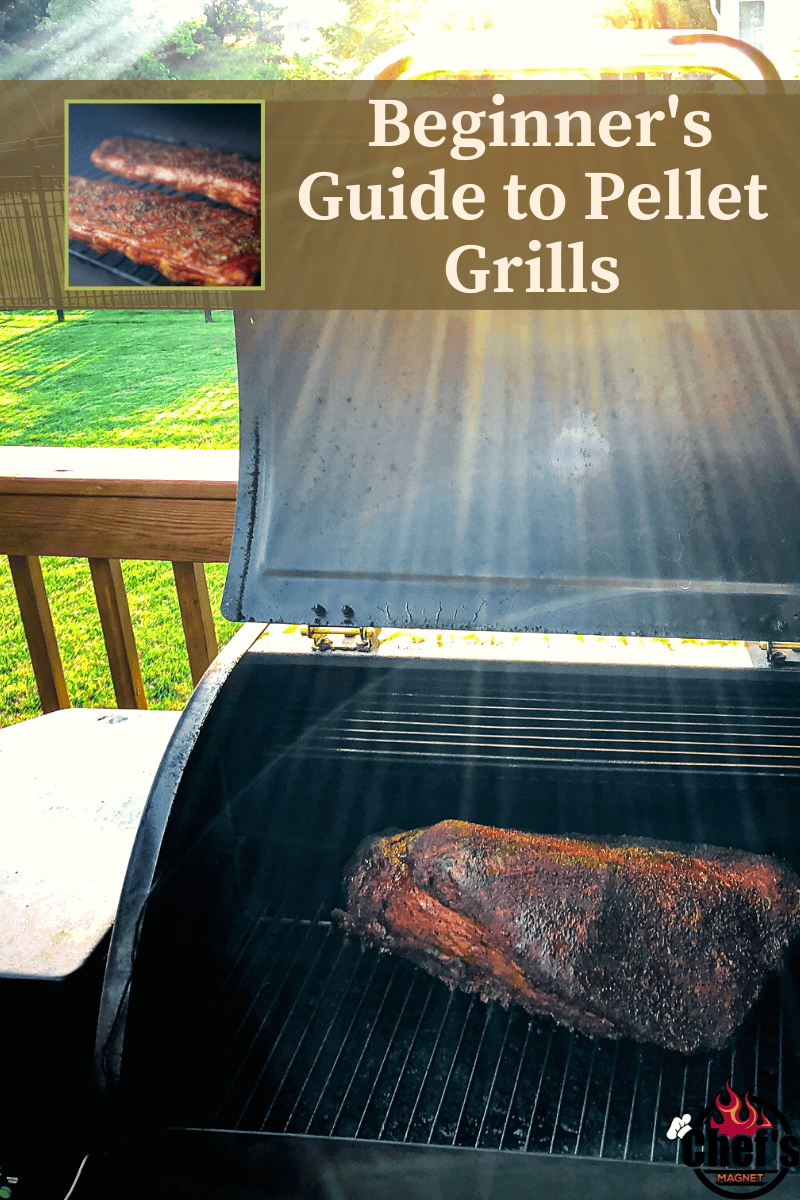






![Personalized Funny BBQ Gift Mug, Don't Worry I Got This I Watched A YouTube Video, By [NAME], Gift For Men, Gift For Dad](https://i.etsystatic.com/39088648/c/2982/2368/0/27/il/cf62b0/5272771721/il_170x135.5272771721_pz0h.jpg)

![Personalized Science Apron, [NAME] Uses [Pronoun] Smoker Periodically, Science Gift For Teachers, Gift For Dad](https://i.etsystatic.com/39088648/c/2982/2368/0/9/il/6bf723/5272542103/il_170x135.5272542103_18nf.jpg)
